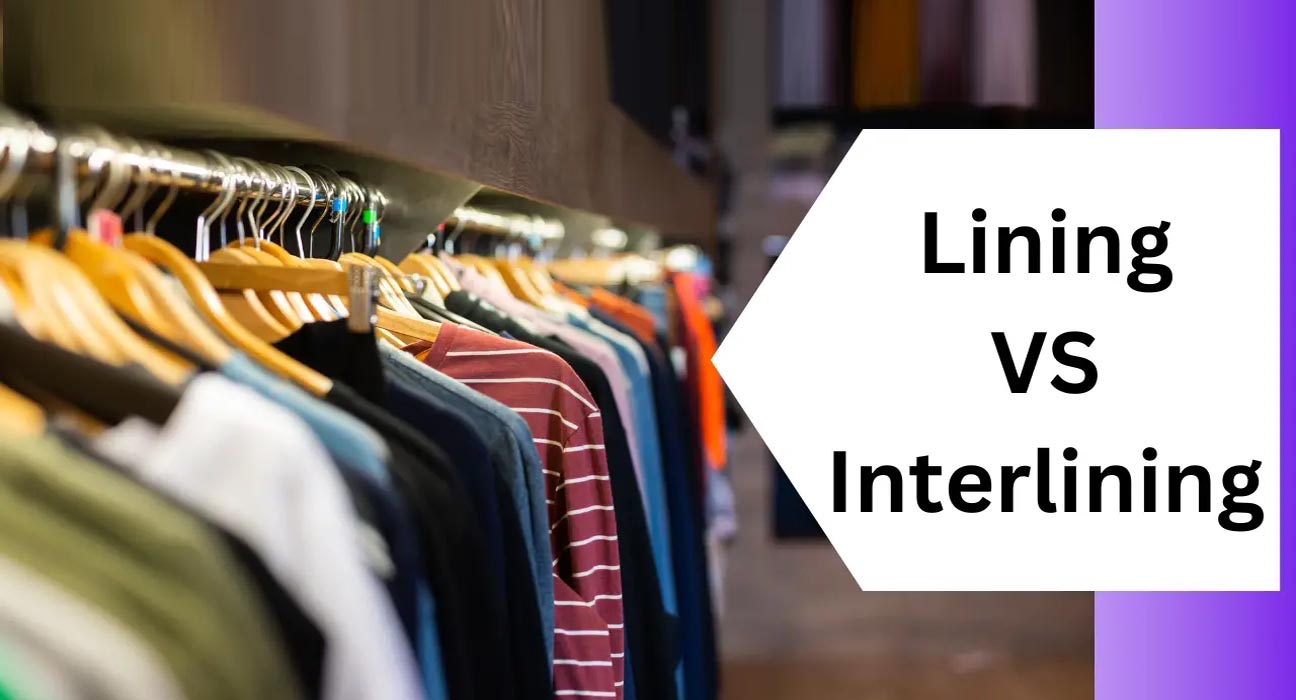Lining vs Interlining. Lining and interlining are the most common words in garment manufacturing. We are going to focus on the key difference between lining and Interlining.
The lining is constructed separately from the garment and attached at facing or hem areas by hand or machine. Interlining is a fabric added to a garment when more warmth is needed, like in a winter coat.
It may be a heavy fabric with batting added or a lighter-weight one like flannel or fleece.
Lining vs Interlining
What is Interlining?
- Interlining is a trim that is used between two layers of fabric in certain garment parts.
- It is attached by sewing or fusing
- Generally, interlinings are soft, thick, and flexible.
- It is made of cotton, nylon, polyester, wool and viscose or blend fibers.
Shrink resist finish, crease resist finish are applied on it for better performance.
What is Lining?
- Lining is generally a functional part of a garment, a trim.
- Sometimes it is called underlining.
- They are available in warp knit or woven structures. They are made from cotton, polyester, nylon, viscose, wool etc.
- Lining material can be used for small parts e.g. pocket or for complete garments.
- It can be used in coat, jacket , shorts, pants, kids wear etc.
Difference Between Lining and Interlining
Parameters |
Lining |
Interlining |
|
1. Placement
|
Used inside of the garment or garment components that is next to skin. | Used between two layers of fabric. |
| 2. Attachment | Attached by sewing. | Attached either by sewing or by applying heat and pressure. |
| 3. Finishes | Finishing is not necessary. | Sometimes shrink resist finish or crease resists finish are required to improve its properties. |
| 4. Coating | No coating is used. | Coating is used on inside surface of fusible interlining. |
| 5. Purposes | To increase hang and comfort of the garment. | To support, reinforce & retain actual shape of garment components. |





